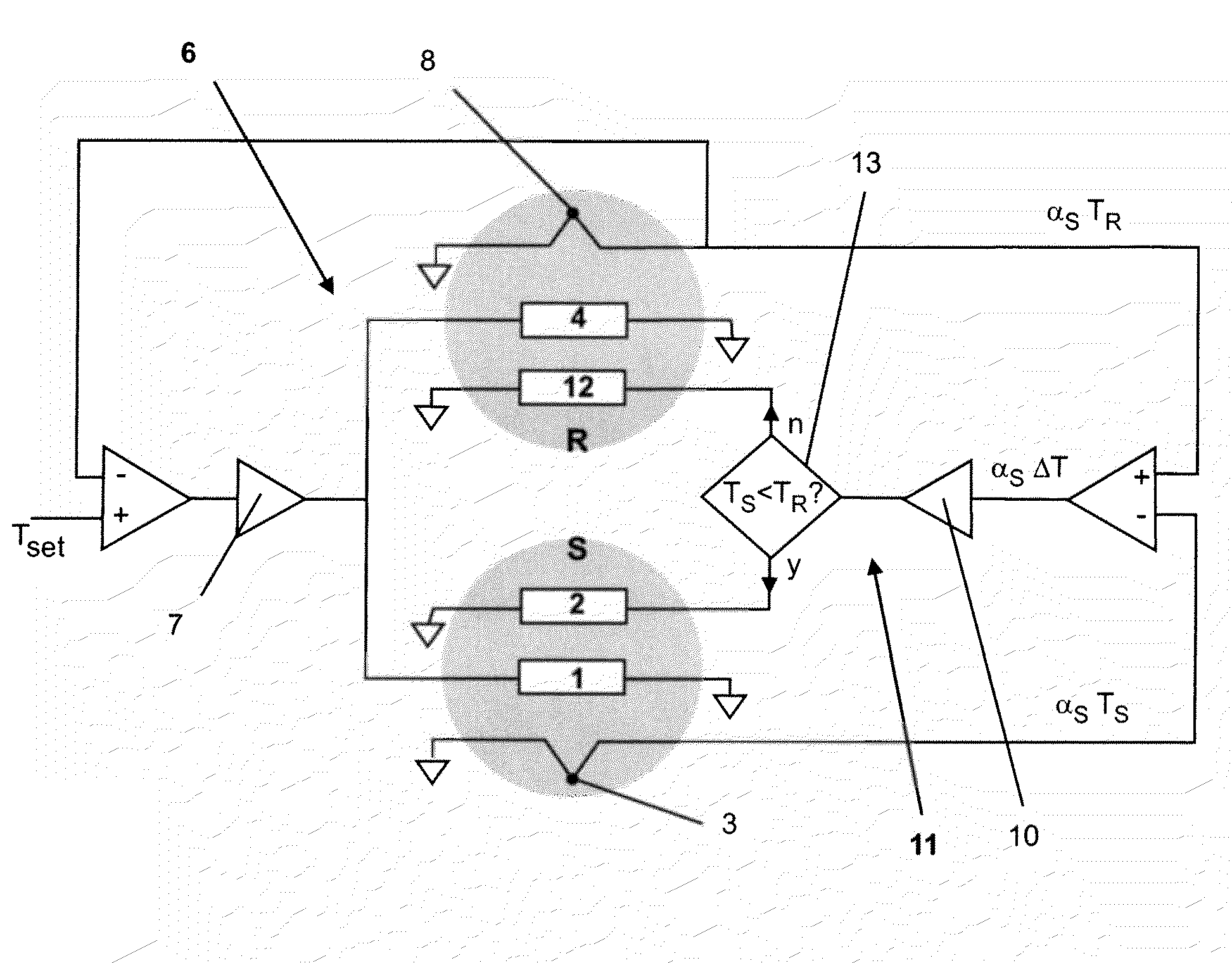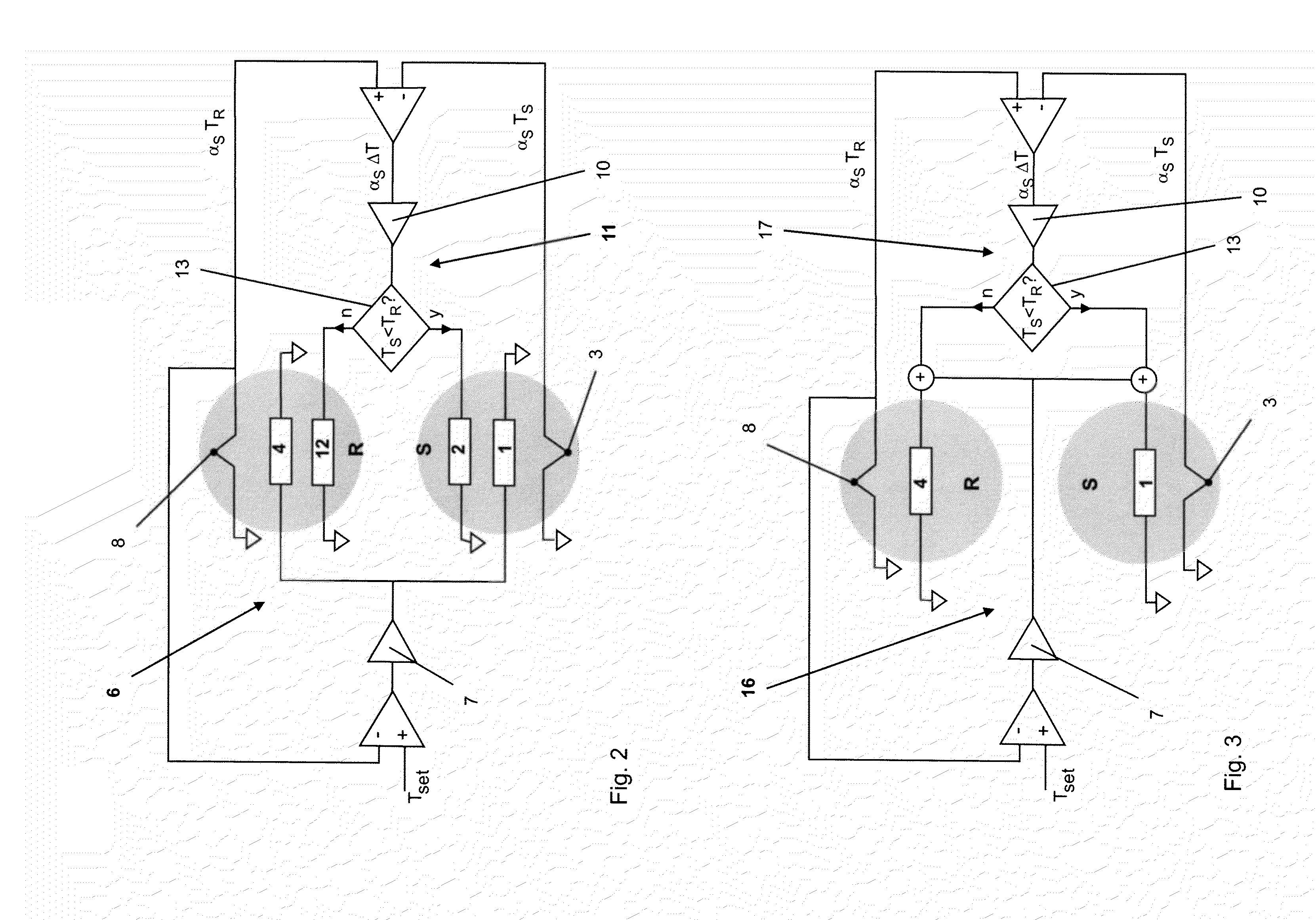Thermoanalytical instrument
a technology of analytic instruments and instruments, applied in the field of thermoanalytic instruments, can solve the problems of reducing the operational temperature range of the instrument, false or incomplete, waste of precious sample materials, time-consuming,
- Summary
- Abstract
- Description
- Claims
- Application Information
AI Technical Summary
Benefits of technology
Problems solved by technology
Method used
Image
Examples
Embodiment Construction
[0068]FIG. 1 shows an electronic setup for a DSC with power compensation, as known in the prior art. The DSC comprises at least two measurement positions, a first measurement or sample position S and a second measurement or reference position R. A sample or sample material can be placed on the sample position S and a reference material can be placed on the reference position R. Experiments on a sample can be performed with and without a reference material.
[0069]The sample position S is in thermal contact with a sample heater 1 and a first compensation heater 2. The temperature at the sample position S is determined by a sensor comprising at least one thermocouple 3. Likewise the reference position R is in thermal contact with a reference heater 4 and a second compensation heater 5, which supplies an offset power arising from a constant offset voltage Uoff. The temperature at the reference position R is determined with a sensor comprising at least one thermocouple 8. The heaters 1, 2...
PUM
| Property | Measurement | Unit |
|---|---|---|
| resistance | aaaaa | aaaaa |
| thermal resistance | aaaaa | aaaaa |
| differential scanning calorimeter | aaaaa | aaaaa |
Abstract
Description
Claims
Application Information
 Login to View More
Login to View More - R&D
- Intellectual Property
- Life Sciences
- Materials
- Tech Scout
- Unparalleled Data Quality
- Higher Quality Content
- 60% Fewer Hallucinations
Browse by: Latest US Patents, China's latest patents, Technical Efficacy Thesaurus, Application Domain, Technology Topic, Popular Technical Reports.
© 2025 PatSnap. All rights reserved.Legal|Privacy policy|Modern Slavery Act Transparency Statement|Sitemap|About US| Contact US: help@patsnap.com



